Stacking Freedom Blocks
When you stack Freedom Blocks, you alternate between squares and rectangles. The blocks do not overlap. The girl will help you remember how the blocks align.

Of course, you can still use your other options like overlapping rectangles, stepping squares and side-steps.
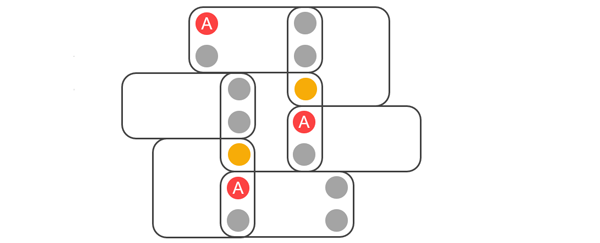
My flag and chair analogy will help you align the rectangles and squares. When you move from a rectangle to a higher square it's like a flag flying high. When you move from a rectangle to a lower square it's like sitting down in a chair.
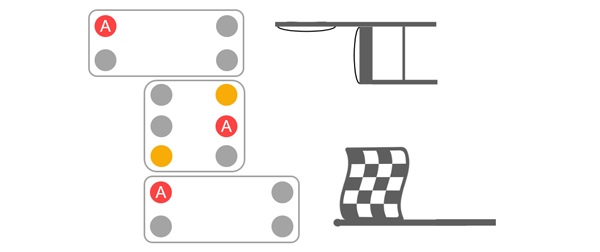
The only time my analogy doesn't work is when the first row of a square or rectangle lands on the B string. In those two cases, the entire Freedom Block moves up one fret.
(Notation rectangle: E2-5, A2-4, D2-4, G2-4, shift, B2-5, E2-5)
(Notation square: E9-11, A9-11, D8-11, G8-11, shift, B9-11, E9-11)
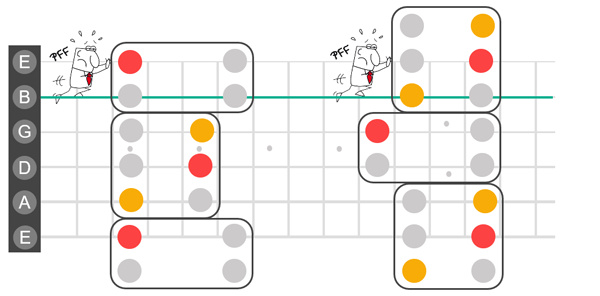
Here's the first stepping square sequence you learned. I've added rectangles above and below the square.
(Notation: E5, A3-5-7, D5-7, G5-7, B5-8-10, E8-10-12)

The rectangle on the B and E strings is shifted up one fret causing all three Freedom Blocks to line up on the left side. This alignment might explain why this is the most famous guitar shape. If you hear a YouTuber say, "We're going to use shape one, or box one." This is the one.
Play the sequence in both directions. Try using your "pinky" or little finger to reach the wide intervals.
(Notation: E5-8, A5-7, D5-7, G5-7, B5-8, E5-8)
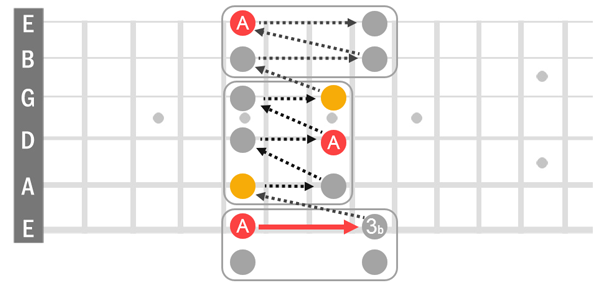
Let's add rectangle notes to our original stepping square pattern. Play the wide interval in the rectangle with your first and third finger, first and pinky finger, or you can slide from one note to the next.
(Notation: E5, A3-5-7, D5-7, G5-7, B5-8-10, E8-10-12)
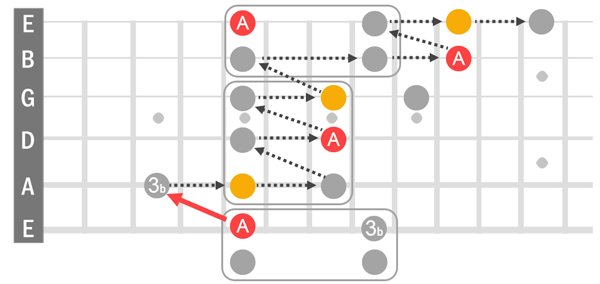
Let's reverse our sequence using a different route back to the root note. Start on the 12th fret of the high E string. Notice that the rectangle shares its right-side notes with the square.
(Notation: E12-10-8-5, B8-5, G7-5, D7-5, A7-5-3, E5)
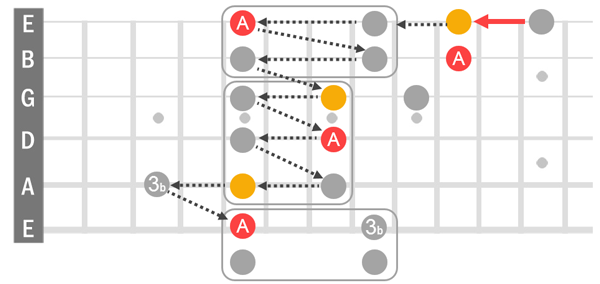
Time to Solo
Here is the same pattern with blues notes. Turn on your A minor backing track. Play up and down while adding the blues and rectangle notes. You can play the flat 3rd on the A or the E string. Notice the blues note on B4. Rectangles overlap squares. The blues note is in row 1 of every square.
(Scale pattern per string: E5-8, A3-5-6-7, D5-7, G5-7-8-9, B5-8-9, E5-8-10-11-12)

All of our examples so far have used the A minor pentatonic scale. Below, I've moved the Freedom Blocks up two frets for an B minor scale. Find a B minor backing track and give this a try.
(Notation: E7-10, A7-8-9, D7-9, G7-9-10-11, B string shift, B10-12, E10-7, B10-7-6-5, G3-5)
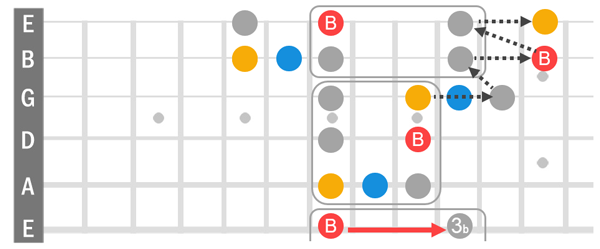
Freedom Blocks let you start on any string. In this next example we're in the key of C minor starting on the 3rd fret of the A string. You can also play row one of the rectangle on the low E string.
(Notation: E3-6, A3-6, D3-4-5, G3-5, B string shift, B4-6, E3-6)
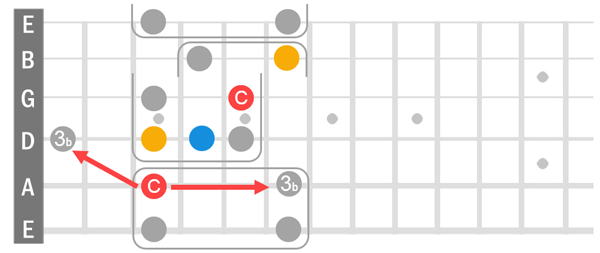
So don't fret about it.